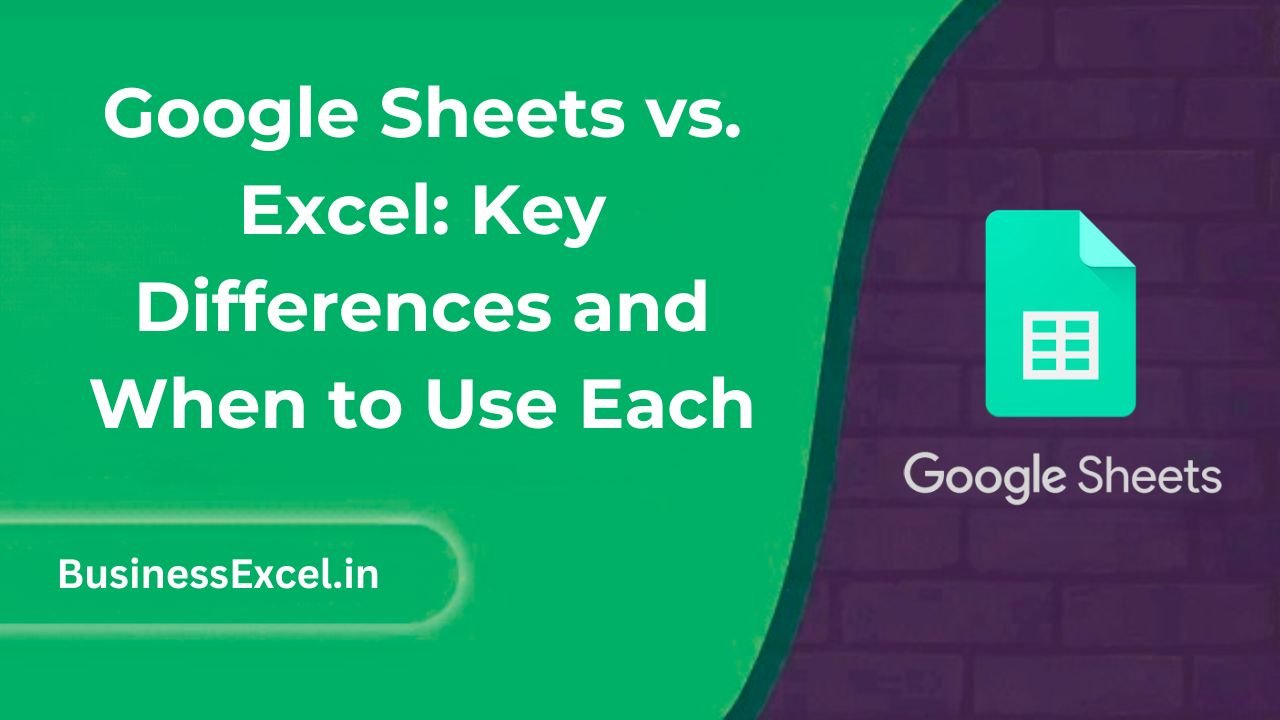When it comes to spreadsheets, two giants dominate the space: Google Sheets and Microsoft Excel. Both tools offer powerful features for organizing, analyzing, and visualizing data—but depending on your needs, one might be a better fit than the other.
Many beginners are drawn to Google Sheets because it’s cloud-based and easy to collaborate with. Excel, on the other hand, has long been the go-to tool for advanced number crunching, especially in corporate environments. One of the standout features of Google Sheets is the QUERY function, which allows users to filter, sort, and analyze data using SQL-like commands—all within a spreadsheet. If you’ve ever wished for a more intuitive way to extract insights from your data, QUERY is your new best friend.

Quick Overview: What’s the Difference?
| Feature | Google Sheets | Microsoft Excel |
|---|---|---|
| Collaboration | Real-time, cloud-based sharing and editing | Limited real-time editing (unless using Excel 365) |
| Accessibility | Runs entirely in a browser | Desktop software (Excel 365 also has web access) |
| Data Limits | Up to 10 million cells per file | Up to 17 billion cells |
| Advanced Features | Great for automation, lightweight analysis | Powerful for modeling, Power Query, VBA |
| Cost | Free with a Google account | Paid software (subscription or license) |
Real-Life Example: Using the QUERY Function in Google Sheets
Let’s say you manage a small sales team and want to see only the entries where the sales amount is greater than $1,000. Here’s how your data might look:
| Rep | Region | Sales |
|---|---|---|
| Alice | East | 950 |
| Bob | West | 1100 |
| Charlie | East | 1300 |
Using the QUERY function, you could enter this formula:
=QUERY(A1:C4, "SELECT A, B, C WHERE C > 1000", 1)
This would return just Bob and Charlie’s rows. In Excel, doing the same task would involve using filters or a combination of IF and FILTER functions or even Power Query—more powerful, but more complex for beginners.
When to Use Google Sheets
- Collaborating in real time with teammates or clients
- Accessing your files on the go with any device and no installations
- Automating workflows with Google Apps Script
- Creating dashboards that pull live data using functions like
IMPORTHTMLorGOOGLEFINANCE - Working on lightweight datasets that don’t require heavy formulas or macros
When to Use Excel
- Handling large datasets with millions of rows
- Using advanced modeling with pivot tables, Power Query, and Power Pivot
- Automating tasks with VBA macros
- Running simulations or complex financial models
- Working offline in high-security or non-cloud environments
Unique Features of Each
Google Sheets
- QUERY function: SQL-like data queries in a cell
- IMPORTRANGE: Pull data across different spreadsheets
- GOOGLETRANSLATE: Translate text in a cell instantly
- Real-time collaboration with comments, suggestions, and edit history
Excel
- Power Query & Power Pivot: For advanced data transformations and modeling
- VBA Macros: Automate complex, repetitive tasks
- Data Analysis Toolpak: Built-in statistics and regression tools
- Extensive charting tools and more visual formatting options
Cheat Sheet: Google Sheets vs. Excel
| Use This Tool If You Need… | Best Choice |
|---|---|
| Real-time collaboration | Google Sheets |
| Advanced data modeling and analysis | Excel |
| Working from any browser or device | Google Sheets |
| Custom macros and automation | Excel |
| Integrating live data from websites | Google Sheets |
| Managing massive spreadsheets | Excel |
There’s no one-size-fits-all answer to the Google Sheets vs. Excel debate. If you’re collaborating remotely, need flexibility, or want to automate simple workflows, Google Sheets is a fantastic tool. If your work involves in-depth financial analysis, heavy data modeling, or high-level automation, Excel still reigns supreme.
Use the strengths of both where they shine—and if you’re just starting out, mastering the QUERY function in Google Sheets is a great way to begin working smarter with your data.